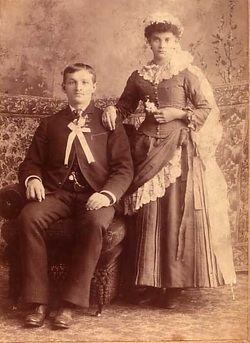Superstitions
SUPERSTITION |ˌsoōpərˈsti sh ən|excessively credulous belief in and reverence for supernatural beings; a widely held but unjustified belief in supernatural causation leading to certain consequences of an action or event, or a practice based on such a belief.
religious & spiritual

- During the Victorian era, people were captivated by Death. The afterlife and communication with the deceased were two areas in particular that interested people.
- It was widely regarded that there existed an intermediate state between life and death. Catholics referred to this Purgatory while Protestants rejected the idea, believing a person's soul went straight to heaven or hell, depending on the extent of their sins.
- The recent development of new technology enabled the Victorians to "communicate" with the non-living. The recent invented negative camera was used to take, what people claimed as, spirit photographs. It was also said that Thomas Edison, the American inventor, attempted to create a phonographic-like device that could be used to speak to the dead.
- At the time of a person's death, the clock should be stopped.
- "Grave robbery by the "Resurrection Men," often by doctors themselves, was a problem in the 19th century as medical schools needed fresh cadavers for dissection classes. "Bricking-over" a grave was a way of guaranteeing some security after death. The dear of a loved one being buried alive inspired coffin makers to design warning systems such as a bel on the grave which was connected by a chain to the inside of the coffin in cases of premature burial, this the expression, "Saved by the Bell." -Friends of Oak Grove Cemetary
1. What do you think of attempts made to communicate with the dead? What are some
modern-day methods? How is communication with the dead portrayed in the media?
social

- The Victorians harbored many superstitions relating to the day of a couple's wedding. Guests threw rice, grain or birdseed at the couple as they left the church in order to ensure fertility. This custom is still practiced at many weddings today.
- In the 1890s many marriages took place in the home. Symbols such as bells, doves, wishbones and horseshoes were considered good luck and were hung around the couple where they exchanged vows.
- To ward away evil spirits, church bells were rung as the couple entered the church. The day of the week upon which a ceremony took place was also believed to foreshadow the success of a marriage:
Tuesday for wealth
Wednesday, the best day of all,
Thursday for losses,
Friday for crosses,
Saturday for no luck at all
Discussion Questions
1. What kind of traditions are there at weddings in the 21st century? At other ceremonial events?
2. Why do people continue to practice such customs that are rooted in mere superstitions?
